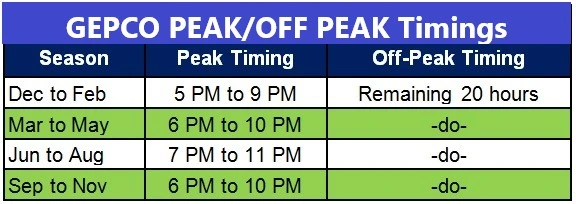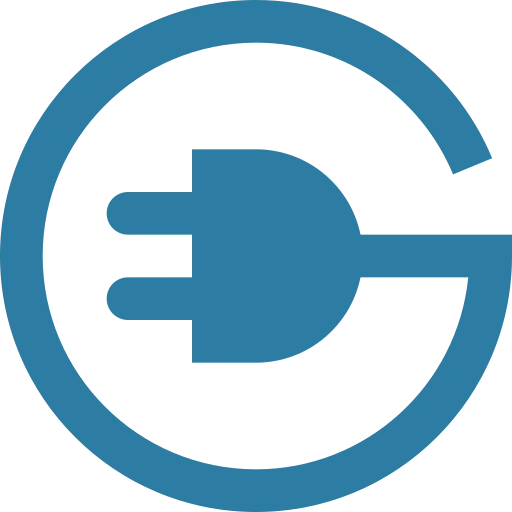GEPCO Peak Hours Timings 2024 (GEPCO Off Peak Hours)
Discover how to make the most of GEPCO Peak Hours Timing 2024 to optimize your electricity usage and save on your GEPCO Bills. Learn about the importance of understanding peak hours, how to identify them, and effective strategies to manage your energy consumption during these periods.

Peak Time GEPCO in 2024
In today’s world, where electricity has become an essential part of our lives, managing energy consumption efficiently is crucial. GEPCO (Gujranwala Electric Power Company) is one of the major electricity distribution companies in Pakistan.
Understanding GEPCO Peak Hours Timing 2024 and implementing smart practices during these times can significantly impact your energy bills. In this comprehensive guide, we will explore GEPCO peak hours, the importance of optimizing electricity usage, and provide you with actionable tips to reduce your energy consumption effectively.
Also Check: GEPCO Load Shedding Schedule 2024
Understanding GEPCO Peak Hours
During Peak time GEPCO, the electricity demand is at its highest, resulting in higher energy consumption. Peak hours generally occur when people return home from work or school and start using various appliances simultaneously. Understanding the concept of GEPCO peak hours is essential for effective energy management and cost reduction. By analyzing peak hour trends, GEPCO can allocate resources efficiently and maintain a reliable power supply.
Also Check: QESCO Online Bill Check
Identifying GEPCO Peak Hours
To identify GEPCO Peak Hours, it’s crucial to analyze your electricity consumption patterns. Consider factors such as your GEPCO Tariff, peak load, and the time slots with the highest energy usage. Monitoring your electricity usage can help you determine when the electricity demand is the highest and make informed decisions about optimizing your energy consumption during peak hours.
Importance of Optimizing Energy Usage
Optimizing your energy usage during peak time of electricity in Gujranwala offers several benefits. Firstly, it helps reduce your energy bills, allowing you to save money in the long run. Secondly, energy conservation plays a vital role in sustainable living and reduces the overall carbon footprint. Additionally, using energy-efficient appliances and adopting responsible energy consumption practices contribute to a greener environment.
Strategies for Managing Peak Hours
- Load Shedding: If possible, avoid using heavy appliances during peak hours when electricity demand is high. Consider rescheduling tasks that require significant energy consumption to off-peak hours.
- Time-based Electricity Usage: Familiarize yourself with GEPCO peak hour tariff plans. Some tariffs offer discounted rates during off-peak hours, making it more cost-effective to perform energy-intensive activities during those periods.
- Shifting High-Energy Activities: Identify energy-intensive tasks, such as running the dishwasher or doing laundry, and shift them to off-peak hours. This way, you can minimize your energy usage during peak hours.
- Appliance Scheduling: Optimize your appliance usage by scheduling their operation during off-peak hours. This practice helps distribute the energy demand more evenly throughout the day.
- Off-Peak Electricity Consumption: Whenever possible, utilize off-peak hours for tasks that don’t require immediate attention. For instance, charging electronic devices or running maintenance tasks can be done during off-peak periods.
FAQs About GEPCO Peak Hours
How do GEPCO Peak Hours Timing 2024 affect my electricity bill?
GEPCO peak hours impact your electricity bill as the rates during these hours are often higher. By understanding and managing your energy consumption during peak hours, you can effectively reduce your electricity costs.
Can I reduce my energy bills by optimizing usage during GEPCO peak hours?
Yes, optimizing your energy usage during GEPCO peak hours timing can significantly reduce your energy bills. By adopting energy-saving practices and shifting high-energy activities to off-peak hours, you can enjoy cost savings in the long run.
What is load shedding, and how does it relate to GEPCO peak hours?
Load shedding refers to the intentional shutdown of electricity supply in certain areas to manage the overall demand. GEPCO implements load shedding during peak hours to balance energy consumption and maintain a reliable power supply.
Are there any incentives for reducing energy consumption during peak hours of GEPCO ?
Some electricity distribution companies, including GEPCO, offer incentives such as discounted rates or special tariff plans for customers who reduce their energy consumption during peak hours. It’s worth exploring these opportunities to further optimize your electricity usage.
How can I monitor my electricity usage during GEPCO peak hours?
You can monitor your electricity usage during peak hours of GEPCO by leveraging smart meters, energy monitoring apps, or by manually tracking your consumption. Analyzing usage patterns can help you make informed decisions about optimizing your energy consumption.
What time of the day is electricity cheapest?
During the nighttime, when the demand for power is significantly lower, electricity rates tend to be more affordable. This period, known as the off-peak hours, typically occurs between 10 pm and 8 am. On the other hand, peak hours refer to the daytime when electricity usage is higher due to increased activity, resulting in higher demand. It’s important to note that not all energy suppliers adhere to time-of-use tariffs.
Conclusion
Managing your electricity consumption during GEPCO Peak Hours is a valuable practice that can lead to significant cost savings and contribute to a greener environment. By understanding GEPCO peak hours, identifying them accurately, and implementing effective energy optimization strategies, you can take control of your energy usage and reduce your electricity bills. Make use of the actionable tips provided in this guide to optimize your energy consumption, enjoy savings, and contribute to a sustainable future.
